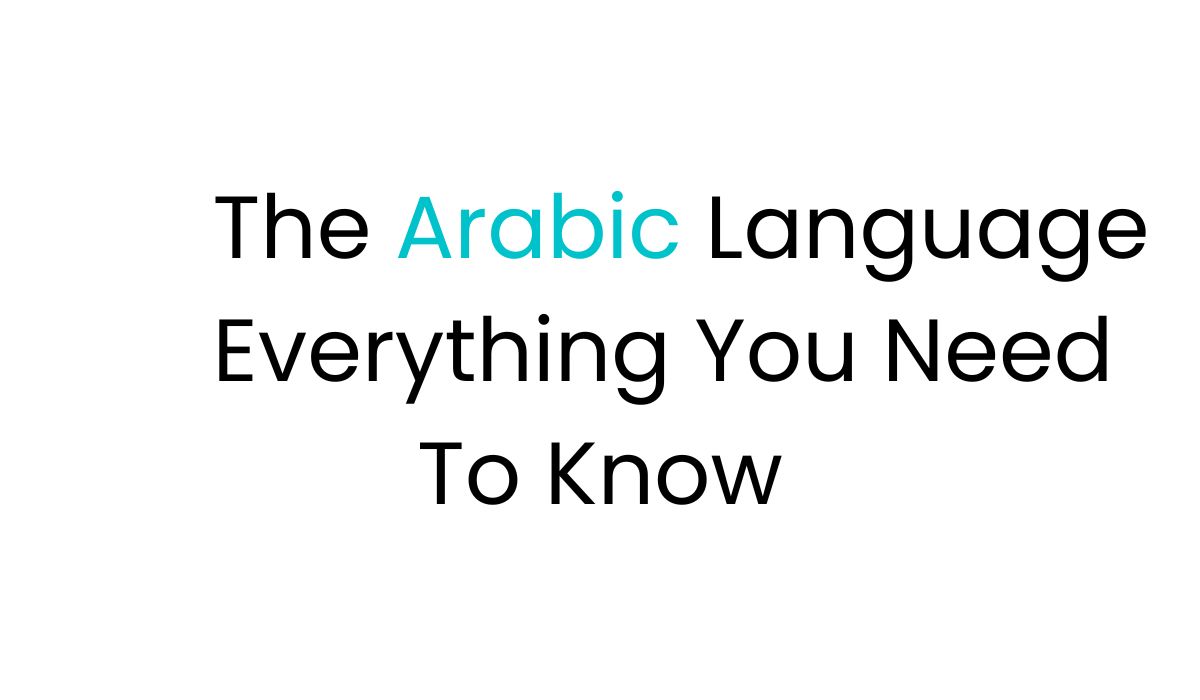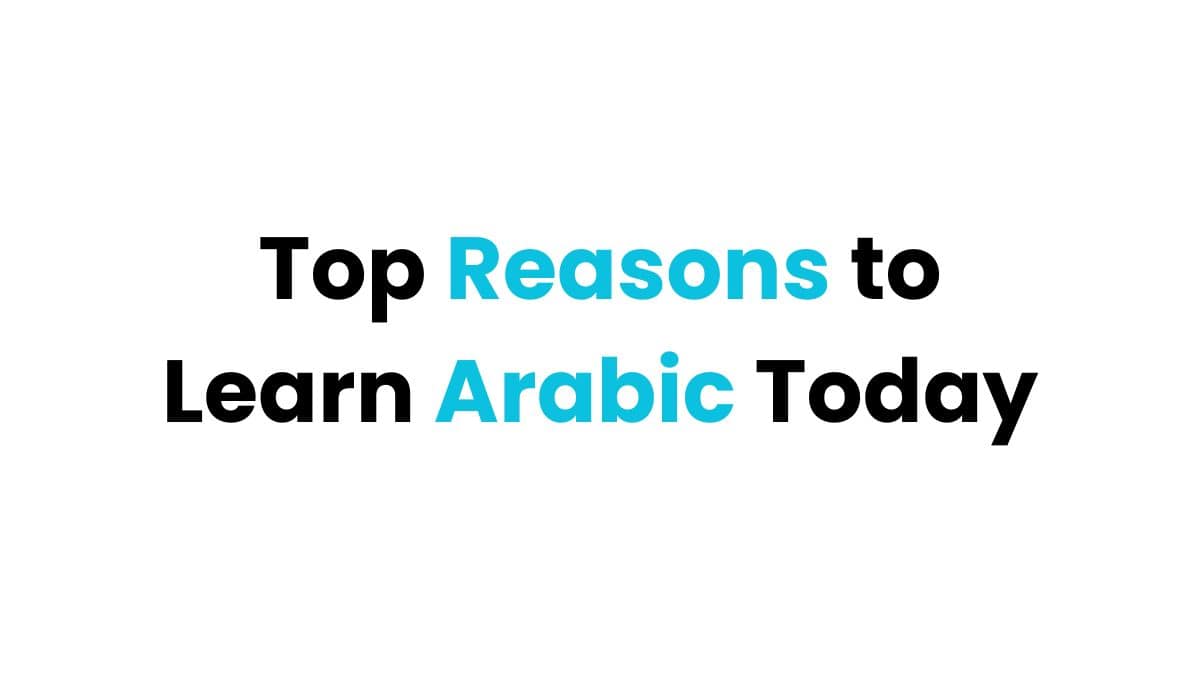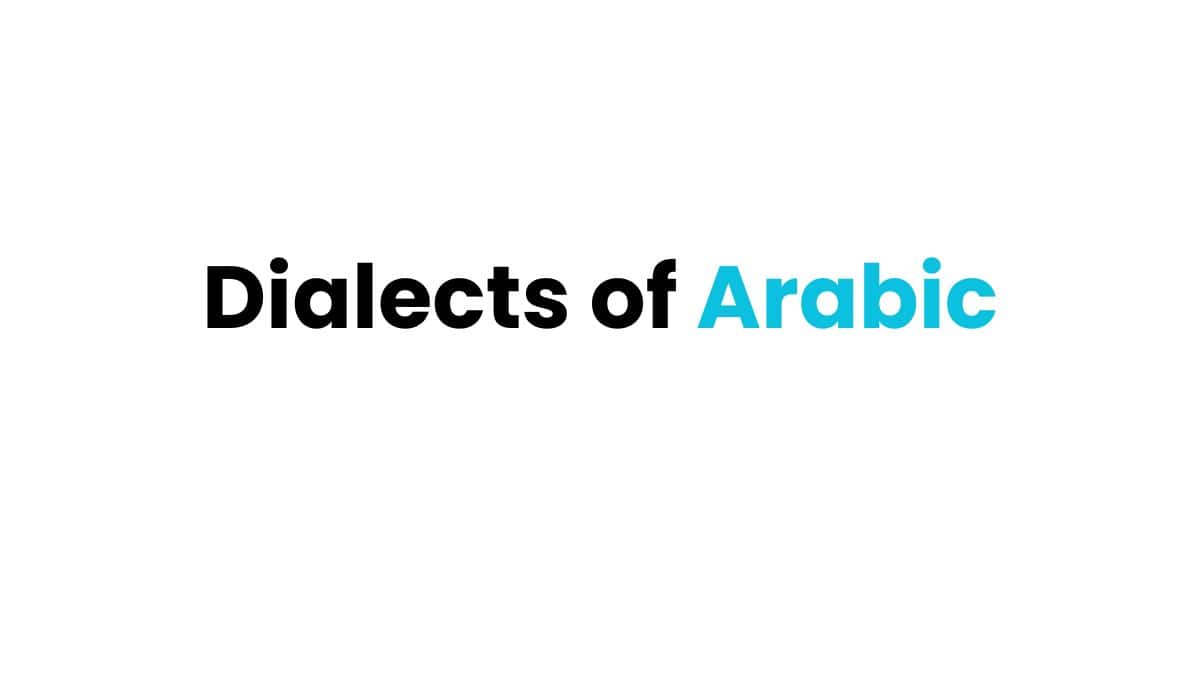Explore the lively world of Levantine Arabic. It’s a treasure that brings culture to life in the Middle East. Shami Arabic is more than a dialect; it’s a way of talking in Lebanon, Syria, Jordan, and Palestine.
Shami Arabic has about 54 million speakers. It’s a powerful way to express thoughts and feelings. It’s a great way for language lovers to dive into the area’s history and culture.
Levantine dialect has roots in Syriac, Turkish, French, and English. Its grammar is simple yet deep. This makes it easy for people all over to learn.
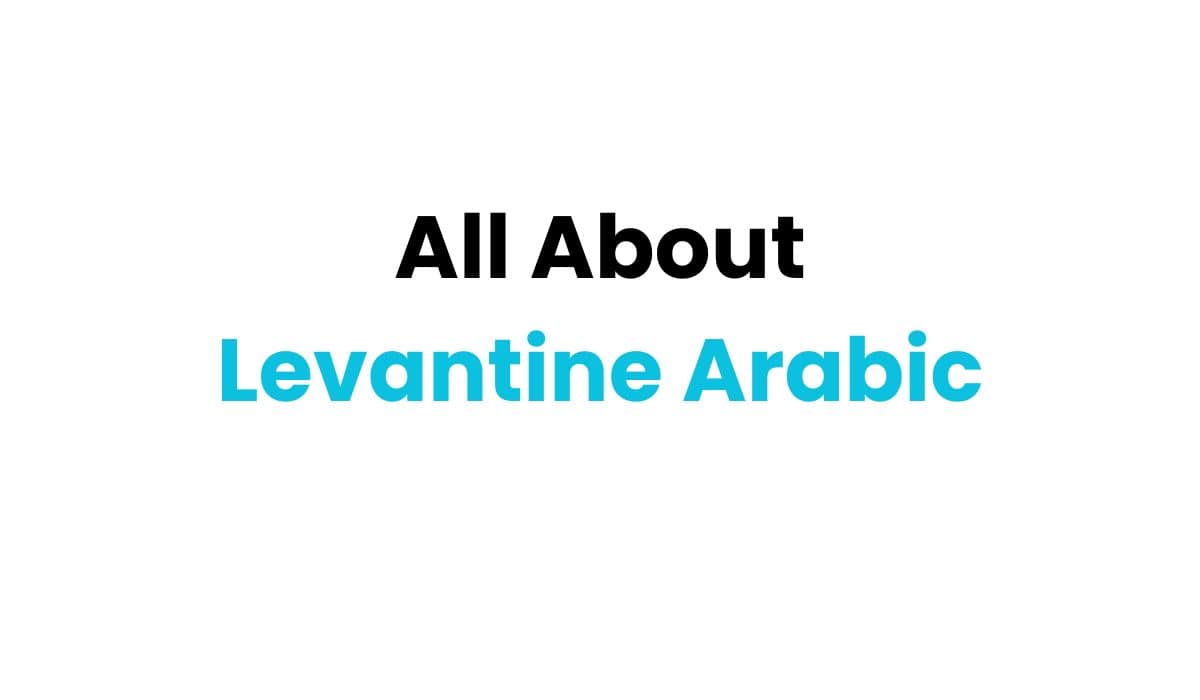
Key Takeaways
- Spoken across four key Middle Eastern countries
- Approximately 54 million native speakers
- Grammatically influenced by multiple languages
- Simpler structure compared to Modern Standard Arabic
- Rich cultural and historical significance
- Widely understood across the Arab world
- Key Takeaways
- Origins and Historical Background
- Modern Usage and Significance
- Northern Levantine Dialects
- Southern Levantine Dialects
- Urban vs Rural Linguistic Variations
- Common Expressions and Phrases
- Sound System and Pronunciation Rules
- Language Influences from French, Turkish, and English
- Key Differences
- Linguistic Characteristics
- Online Learning Platforms
- Language Exchange Opportunities
- What exactly is Levantine Arabic?
- How different is Levantine Arabic from Modern Standard Arabic?
- Where is Levantine Arabic spoken?
- Is Levantine Arabic difficult to learn?
- What historical influences have shaped Levantine Arabic?
- Can I use Levantine Arabic in other Arabic-speaking countries?
- What are the best resources for learning Levantine Arabic?
- How different are the Levantine Arabic dialects between countries?
- Is it worth learning Levantine Arabic instead of Modern Standard Arabic?
- How long does it typically take to learn Levantine Arabic?
What is Levantine Arabic?
Levantine Arabic is a lively dialect with deep roots in the Middle East. It connects millions in Syria, Lebanon, Jordan, and Palestine. It shows the history and culture of these places.
This language has a rich history, starting from ancient Semitic roots. Damascene, Palestinian, and Lebanese Arabic add their own special touches to it.
Origins and Historical Background
Levantine dialect grew over centuries, influenced by many cultures. It was shaped by:
- Greek civilization
- Roman conquests
- Persian interactions
- Ottoman imperial presence
Modern Usage and Significance
Today, Shami Arabic is alive and connects over 54 million people. It’s not just a way to talk—it’s a link between families and communities.
The Rich Cultural Heritage of Shami Arabic
Levantine dialect, or Shami Arabic, is a vibrant language deeply rooted in the Middle East. It has about 54 million native speakers in Syria, Jordan, Lebanon, and Palestine. This dialect is a powerful way to express culture and connect with others.
The cultural value of Shami Arabic goes beyond just talking. Jordanian and Syrian Arabic have unique traits that show the area’s varied social scene. Music, literature, and media are key in keeping this language alive and celebrated.
- Musical icons like Fairuz have immortalized Levantine Arabic through soulful melodies
- Literature by writers such as Ghassan Kanafani captures the dialect’s emotional depth
- Media platforms increasingly use Levantine Arabic in broadcasting and entertainment
Social gatherings and family events are like living museums of language. The dialect shows the warmth, hospitality, and strength of Levantine communities. Each area has its own special stories told through slight variations in the language.
| Region | Dialect Characteristics | Cultural Significance |
|---|---|---|
| Syrian Arabic | Damascus prestige dialect | Most documented Levantine variety |
| Jordanian Arabic | Distinct phonological features | Strong Bedouin linguistic influences |
| Palestinian Arabic | Shared words with Modern Standard Arabic | Reflects historical linguistic diversity |
Learning Levantine dialect is more than just learning a language. It’s a journey into a vibrant, dynamic culture. It connects people across ages and borders.
Understanding Levantine Dialects and Variations
The Levantine Arabic world is full of different languages, showing the rich culture of Eastern Arabic Dialects. Over 54 million people speak these dialects in Lebanon, Syria, Jordan, and Palestine. Each dialect tells a story of regional identity.
Shami Arabic is not just one language. It’s a mix of many, shaped by history, geography, and society. The roots of Mesopotamian Arabic blend with local traits, making unique ways of speaking.
Related post: The World of Arabic Dialects
Northern Levantine Dialects
Syrian and Lebanese dialects are the northern types of Levantine dialects. They are known for:
- Softer consonant sounds
- Influences from French and Turkish
- Unique words from cities like Beirut and Damascus
Southern Levantine Dialects
Palestinian and Jordanian Arabic are the southern types. They are marked by:
- Harder consonant sounds
- Keeping more traditional Arabic words
- Strong Bedouin influences
Urban vs Rural Linguistic Variations
The difference between city and countryside in Shami Arabic is interesting:
| Characteristic | Urban Dialect | Rural Dialect |
|---|---|---|
| Language Influences | Foreign languages (French, English) | Traditional Arabic roots |
| Pronunciation | Softer, more cosmopolitan | Rougher, more traditional |
| Vocabulary | More modern terms | More classical expressions |
Knowing these differences helps learners see the depth and complexity of Levantine dialect. It turns talking into a rich cultural experience.
Essential Features of Levantine Grammar
Shami Arabic is special because of its unique grammar. It’s different from Modern Standard Arabic. This dialect makes learning easier because it’s more flexible and conversational.
Shami Arabic has some key features:
- Flexible word order with both VSO and SVO structures
- Simplified verb conjugations
- Two grammatical genders: masculine and feminine
- Unique pronunciation rules for definite articles
The way sentences are built in Levantine Arabic is quite flexible. For instance, most feminine nouns end with Tāʼ marbūṭah (ـة). The dual form is made with the suffix -ēn (ين-).
“Levantine Arabic grammar transforms complex linguistic rules into a more approachable communication style.” – Language Research Institute
There are some interesting grammatical details:
- No copula (connecting verb) in present tense
- Verb “kān” used in other tenses
- Definite article “ال” (il) with multiple pronunciations
Levantine dialect has around 12 broken plural patterns. This makes the language rich and full of life in its grammar.
Vocabulary and Pronunciation Guide
Shami dialect is a vibrant mix of culture and sound. It’s heard in Damascus’s streets and Palestinian cities. This dialect shows how people in the Levant communicate.
Common Expressions and Phrases
Damascene and Palestinian Arabic have unique sayings. These phrases show the area’s rich culture. Here are some key ones:
- Marhaba – Hello (casual greeting)
- Keefak? – How are you?
- Afwan – Excuse me/Sorry
- Yalla – Let’s go/Come on
Sound System and Pronunciation Rules
Learning Levantine Arabic can be tough. It sounds different from Modern Standard Arabic. The sounds and ways of saying words are unique.
| Consonant Type | Characteristic | Example |
|---|---|---|
| Emphatic Consonants | Produced with tongue raised towards pharynx | /ṭ/, /ṣ/, /ḍ/ |
| Glottal Variations | Regional pronunciation differences | /q/ vs /g/ sounds |
Language Influences from French, Turkish, and English
Levantine Arabic is a mix of many languages. It has words from French, Turkish, and English. This shows the area’s history and culture.
“Language is a city to the building of which every human being brought a stone.” – Ralph Waldo Emerson
- French borrowings: telefōn (telephone)
- Turkish influences: čāy (tea)
- English adaptations: kompyūter (computer)
Knowing these language details enriches learning. It makes understanding Damascene and Palestinian Arabic more engaging.
Levantine Arabic vs Modern Standard Arabic
Levantine Arabic and Modern Standard Arabic (MSA) show us a rich world of language. Lebanese Arabic and Jordanian Arabic are special dialects. They have their own ways of speaking that differ from the standard Arabic.
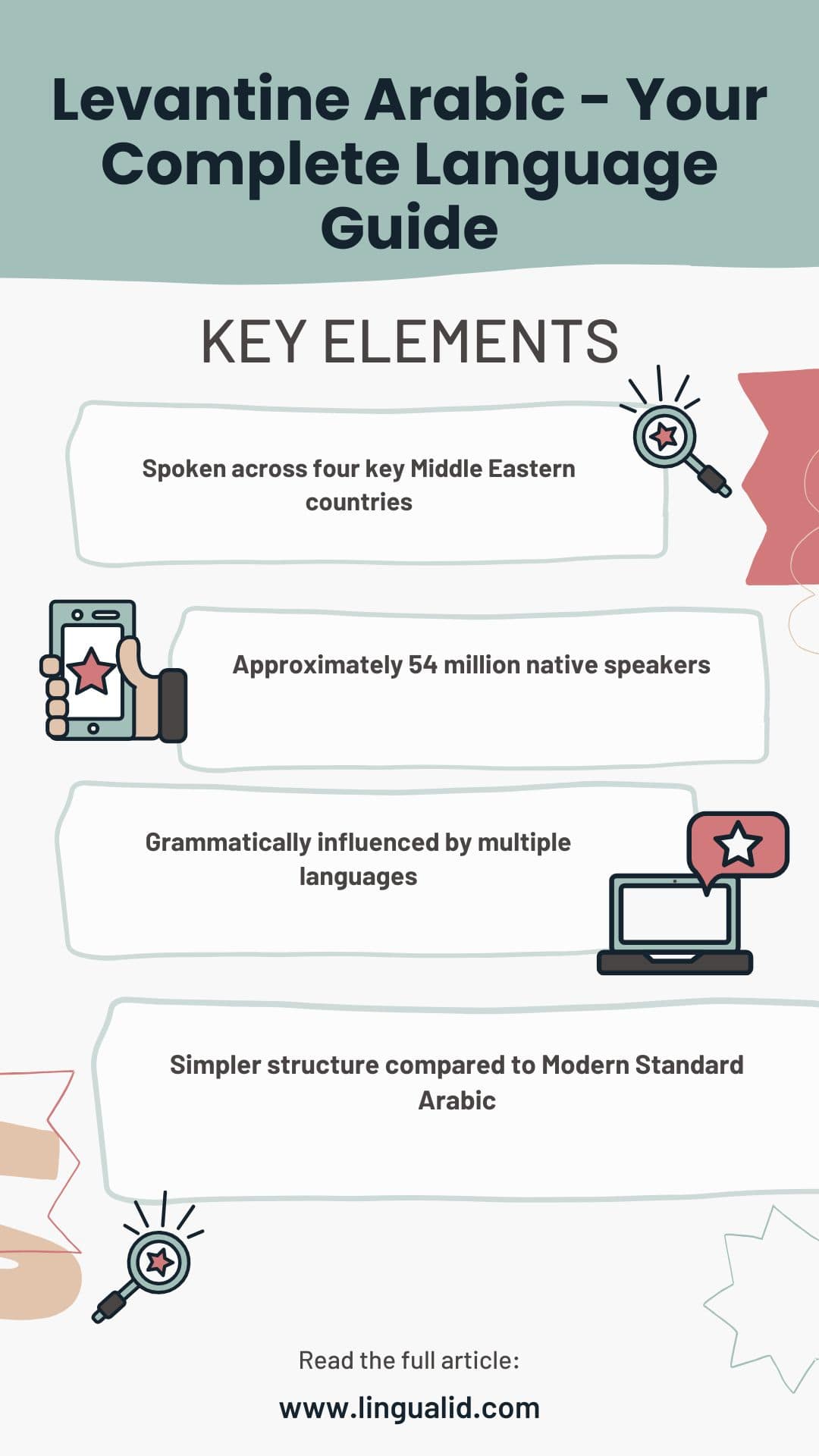
Levantine Arabic is more flexible and used in everyday talks. MSA is for formal situations. It’s common in Syria, Lebanon, Jordan, and Palestine.
Key Differences
- Pronunciation variations
- Simplified grammatical structures
- Rich incorporation of local loanwords
- More expressive communication style
Linguistic Characteristics
| Feature | Levantine Arabic | Modern Standard Arabic |
|---|---|---|
| Vocabulary Retention | 40-50 words from MSA | Classical Arabic foundation |
| Pronunciation | Regional sound variations | Neutral pronunciation |
| Usage Context | Daily conversation | Formal communication |
The Syrian dialect is very understandable worldwide. About 70% of city folks change some Arabic sounds. This makes their language unique.
Knowing both MSA and Levantine Arabic helps you understand Arabic better. MSA is for school, while Levantine dialects make conversations real and lively.
Learning Resources and Study Methods
Starting your journey to learn Levantine Arabic is exciting. You’ll need to pick the right resources and study methods. Whether you’re into Syrian Arabic or Mesopotamian dialects, there are many tools to help you learn fast.
Online Learning Platforms
Digital platforms have changed the game for learning Shami Arabic. Here are some top resources:
- TalkInArabic.com – Covers 8 spoken Arabic dialects
- Italki Arabic – Helps you find native speakers
- Pimsleur Eastern Arabic course – Uses spaced repetition
Language Exchange Opportunities
Getting hands-on experience is key to mastering Levantine Arabic. Here are some ways to get involved:
- YouTube channels like “Learn Arabic with Maha”
- Cultural media like “Roya TV” and Jordanian Sesame Street
- Online tutoring platforms for practice
With over 54 million Levantine Arabic speakers, your learning journey opens doors to rich cultural connections!
Remember, consistent practice and using many resources are crucial. Try different platforms, talk to native speakers, and dive into the language’s culture.
Cultural Immersion and Practice Tips
Learning Eastern Arabic Dialects is more than just reading books. Levantine Arabic comes to life through real-life experiences. These experiences turn learning into actual conversations.
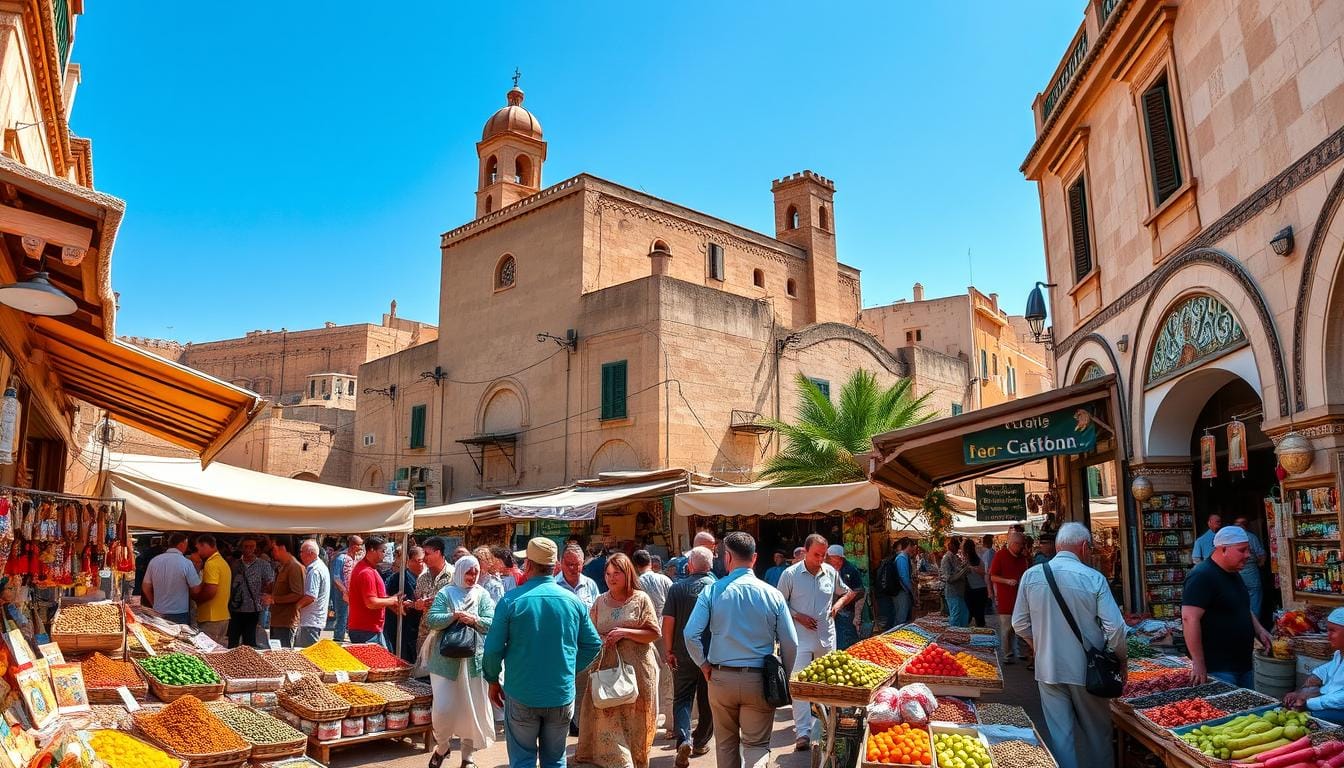
Getting immersed in the culture is key to mastering Levantine Arabic. Here are some effective ways to boost your learning:
- Watch local TV shows and movies from Syria, Lebanon, Jordan, and Palestine
- Listen to regional music and podcasts
- Follow social media accounts of Levantine content creators
- Join online language exchange communities
Practical ways to dive into the culture can really help your Levantine Arabic. Try these methods:
- Attend cultural festivals in your local community
- Connect with native speakers through language apps
- Practice conversational skills in specialized language cafes
- Participate in virtual language meetups
Mastering Levantine Arabic needs regular practice and cultural involvement. Studies show learners who dive in can boost their skills by up to 75%.
| Immersion Strategy | Potential Benefit |
|---|---|
| Online Language Exchanges | 50% increased speaking confidence |
| Cultural Media Consumption | 40% faster vocabulary acquisition |
| Local Community Interaction | 60% improved comprehension |
Remember, learning a language is a journey of cultural discovery. Grab every chance to practice Levantine Arabic with excitement and curiosity.
Conclusion
Learning Levantine Arabic is more than just a language. It opens doors to rich cultural experiences in Syria, Lebanon, Jordan, and Palestine. It connects you with vibrant communities and lets you understand deep traditions and social dynamics.
Levantine Arabic is great for personal and professional growth. It has unique dialects and a deep history. It’s a powerful tool for cultural immersion. It’s also useful for jobs in international relations, translation, and cross-cultural communication.
Learning Levantine Arabic requires consistent practice and genuine engagement. Watch local media, talk to native speakers, and enjoy the dynamic nature of Shami Arabic. Your effort will improve your communication skills and give you deep insights into the Levant’s culture.
The world of Levantine Arabic is waiting for you. Every conversation and new phrase you learn brings you closer to understanding this fascinating language. Your journey is just starting.
FAQ
What exactly is Levantine Arabic?
How different is Levantine Arabic from Modern Standard Arabic?
Where is Levantine Arabic spoken?
Is Levantine Arabic difficult to learn?
What historical influences have shaped Levantine Arabic?
Can I use Levantine Arabic in other Arabic-speaking countries?
What are the best resources for learning Levantine Arabic?
How different are the Levantine Arabic dialects between countries?
Is it worth learning Levantine Arabic instead of Modern Standard Arabic?
How long does it typically take to learn Levantine Arabic?
Oualid Cheddadi is the founder of Lingualid, a platform that inspires independent language learners worldwide, regardless of the language they are learning. The name “Lingualid” is derived from the Portuguese word for “language,” “língua,” and the last three letters of Oualid’s name, “Lid.”

